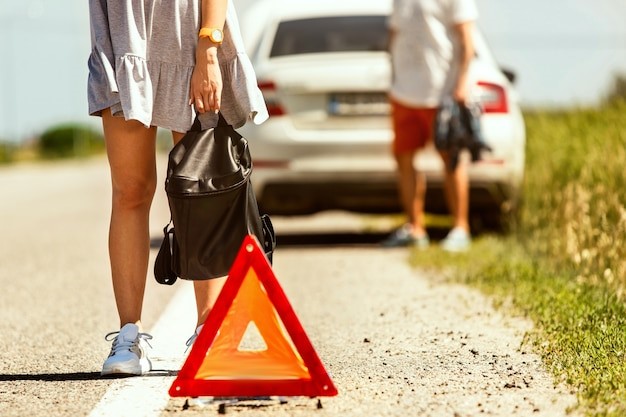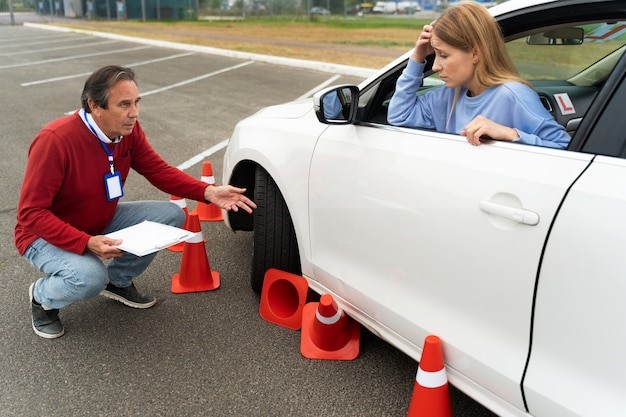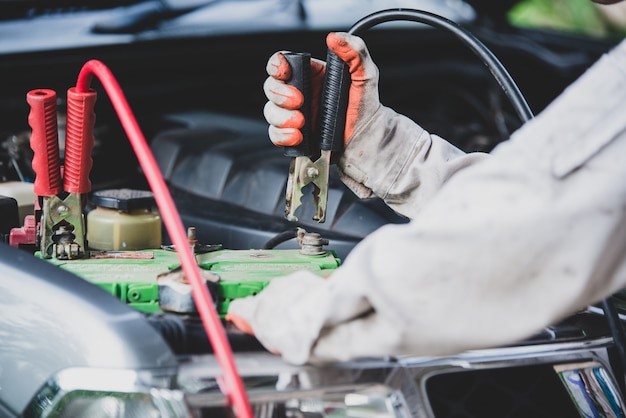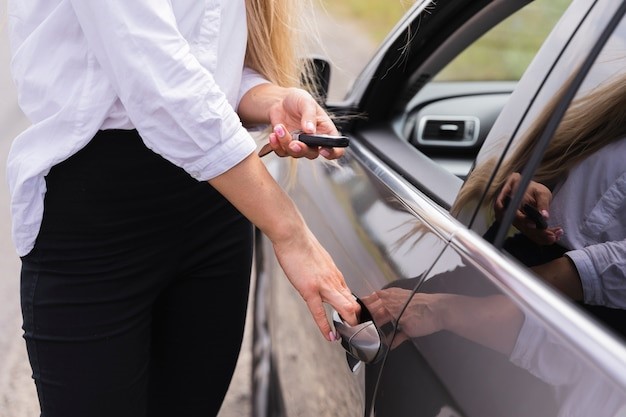It has happened to almost every one of us where you insert your key in the car, you twist it but nothing happens. No lights, no sound, no engine. A car battery dies at the most inconvenient time, particularly in the morning when you are in a rush or when you are on a long journey.
The positive thing is that, in most cases, this issue can be resolved in a short period of time using a jump start. Being aware of the right way to jump start a car on the side of the road may save you time, stress, and even money. However, when you do it incorrectly it can spoil your vehicle or cause injuries to you. And there is all you need to know to get your motor running safely and with confidence.
Why Safety and the Right Procedure Matter When Jump-Starting
Jump-starting can appear to be an easy task, but any incorrect step can result in sparks, electric shock, or severe car damage. Properly following the car battery jump procedure will save your life and prevent damage to the electrical system of your car.
When you end up being stranded at the roadside, it is best to calm down and do what you should do. It does not matter whether you are using jumper cables or a portable jump starter; the aim is to get your engine started without danger. Through some basic precautionary measures and the appropriate information, you can work with a dead battery as an expert.
What You Need Before Jump Starting
Before you start, you will need:
- A pair of jump cables or a jump starter.
- A functional automobile or a battery pack.
- Reflective triangle or safety cones on the road.
- Gloves (optional but helpful)
- A flashlight if it’s dark
Safety always comes first. Before reaching under the hood, make sure that you have your space positioned.
Car Battery Jump Procedure
Starting a car means that you take one battery and connect it to another battery in a way that the power that is charged in the first battery enters the dead battery. The following is the correct method of doing it.
Step-by-Step Guide to Safely Jump Start Your Vehicle
- Place both the vehicles in a manner that the batteries are within reach of the cables.
- Switch off the two engines, take off keys and park brakes.
- Open the two hoods and find the batteries. Determine the positive and negative ends.
- Attach jumper cables in the correct order:
- Red clamp to the positive (+) terminal of the dead battery
- Red clamp to the positive (+) terminal of the good battery
- Black clamp to the negative (–) terminal of the good battery
- Black clamp to a metal component of the vehicle frame on the dead vehicle (this is your vehicle ground connection)
- Red clamp to the positive (+) terminal of the dead battery
- Start the vehicle that is going to be worked on and allow it to run 3-5 minutes.
- Attempt to start the non-functioning car. When it will not boot up, take a few minutes more and re-try.
- When it begins, it is better to pull the cables out one by one in the opposite order to the way they were earlier on.
- Allow your engine to take at least 15-20 minutes to recharge your battery.
Common Mistakes Drivers Make When Jump-Starting
- Plugging cables on the incorrect ports.
- Skipping the grounding step
- Attempting to leap over a frozen or leaking battery.
- Failure to check the possibility of corrosion before attaching clamps.
- Tripod removal of cables prematurely after the engine has started.
How to Know if Your Battery Truly Needs a Boost
Other times your car could fail to start due to other reasons such as alternator malfunction or loose wire. See whether your lights or radio works before jump-starting. Otherwise, the battery will probably be dead.
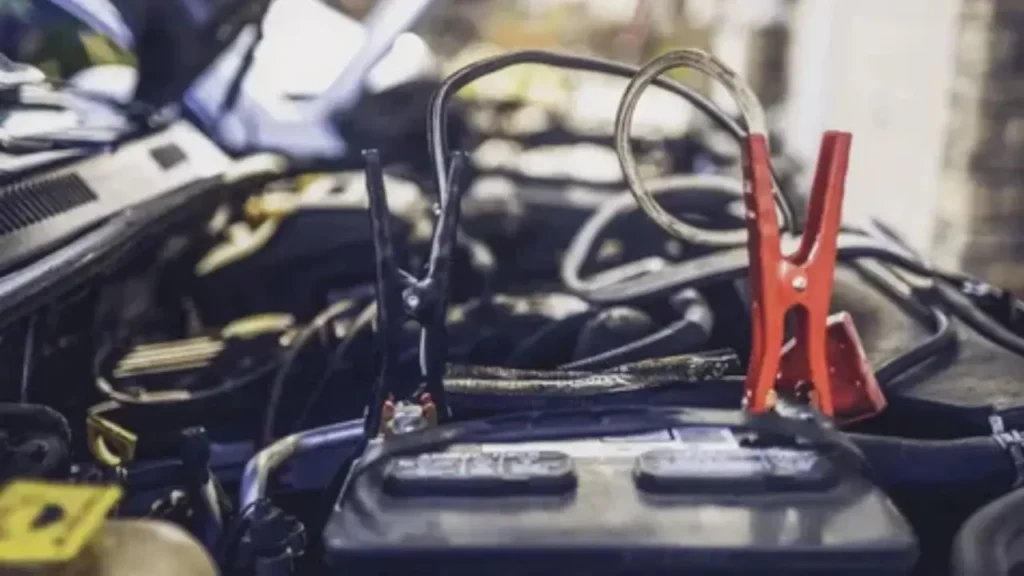
Jumper Cable Connection Order
The order of connection in the jumper cable is important as far as safety is concerned. Wrong interconnections may lead to sparks or even short circuiting.
The Correct Order
- Red to Dead: Use the red clamp to connect the positive terminal on the dead battery.
- Red to Donor: ANSWER to the positive terminal on the working battery with the other red clamp.
- Black to Donor: Turn on the black clamp to the negative terminal of the working battery.
- Black to Ground: Attach the final black clamp to a clean and unpainted metallic surface on the engine block or frame of the dead vehicle.
Why the Order Matters
The order of operations gives the appropriate sequence to prevent sparks and transfers of power. The ground connection of the vehicle assists in preventing the possibility of discharging electricity directly around the battery, which is not very safe.
Roadside Emergency Safety Tips
Safety is the first thing to consider before you begin working on your car. The roadside is uncertain.
Preparing a Safe Space
- Park somewhere on a flat, open field that is not in traffic.
- Switch the hazard lights on to make other drivers notice you.
- Use roadside cones of safety or flares, where possible.
- Hold your hood open–it is a good sign that you want assistance.
Staying Calm During Roadside Emergencies
- Pull over in your car when there is a traffic jam.
- Get out of the car only if it is safe.
- Always have a small emergency kit in the trunk in case such an emergency occurs.
Dead Battery Assistance
How to Know If the Battery Is Completely Dead
- There is no turning on of the lights and the dashboard.
- You can hear clicking noise and yet the engine does not start.
- There is very slow or no start of the engine.
Jump-starting can be used to jump-start the car several times, but when it fails to work, it might be time to seek professional help of jump-starting the battery or even replacing the battery.
When to Call Roadside Professionals
In case of doubt or the lack of equipment, it is better to call out trained professionals. Safe jump start precautions can be addressed by roadside professionals and a good condition of battery and alternator ensured.
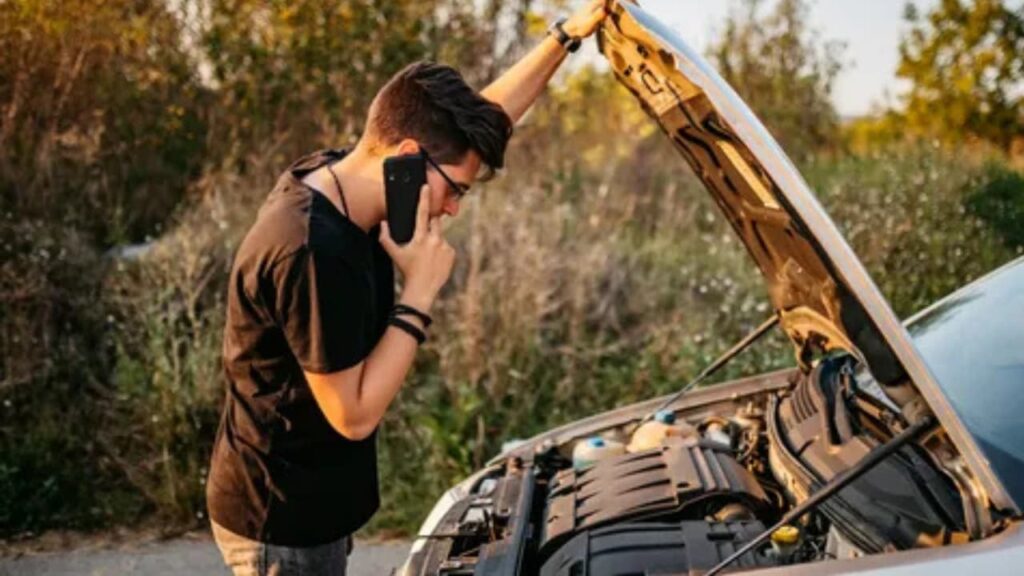
Correct Jump Start Voltage
The majority of car batteries are running on 12 volts, although this should always be checked in the manual of your vehicle. There are chances of breaking the electrical system of your car by using the wrong voltage.
- Cars and light trucks: 12 volts
- Large diesel trucks: 24 volts (may require special equipment)
Do not attempt to jump a car on a source of power which is not of the right voltage.
Vehicle Ground Connection
What Is Grounding?
Grounding refers to the connection of the last negative cable into a metal component of the dead car rather than the battery. This minimizes chances of sparks.
Why It Matters
- Battery gases are prevented by explosion.
- Ensures safe current flow
- Guarantees the safety of the sensitive electronics of your car.
Common Grounding Mistakes to Avoid
- Plugging the black cable directly to the negative post on the dead battery.
- Bonded to painted or plastic components (no current will pass)
- Disregard evidence of corrosion on the metal surface.
Portable Jump Starter Guide
A portable jump starter is your best friend in case you do not have another car around.
How to Use a Portable Jump Starter Safely
- Switch off your car and find a battery.
- Install the clamps as on traditional jumper cables, red on positive, black on ground.
- Switch on the jump starter and attempt to start the car.
- When beginning, turn off and disconnect respectively.
Benefits of Carrying a Portable Battery Booster
- There is no necessity to depend on a driver.
- Compact and easy to store
- Works even in remote areas
The kit usually includes a portable jump starter guide that should be stored in the kit to use as a reference.
Roadside Safety Cones and Visibility
Visibility is all you need in case you are trapped in the dark or on a congested highway.
Importance of Marking Your Area
- Put cones or reflective triangles at least 50-100 feet in the rear of your car.
- Without cones, hazard lights or flashers are to be used.
- You can wear a bright vest or jacket when leaving your car.
Those small measures will help a lot in safeguarding you.
Avoiding Sparks When Jumping a Car
One of the most significant risks in jump-starting is the sparks.
Causes of Sparking
- Wrong order of cable connections.
- Poor grounding
- Handling metal components using clamps.
How to Prevent Accidental Short Circuits
- Never trust your connections.
- Do not allow clamps to come into contact.
- Check cable damage before usage.
Safe Jump Start Precautions
- It is advisable not to jump-start in rain or snow.
- Don’t lean over the batteries
- When you smell gas, or when you see fluid leaking out of the battery–stop.
Safe Jump Start Precautions
Before trying to jump your car:
- You should consult your owner manual- warning.
- Check the battery whether it has any cracks or leaks.
- Keep pets and children away from the area Do not keep pets and children in the vicinity.
- Never smoke near the battery
- And in case of any doubt, ask them to assist you, not to risk anything.
Professional Roadside Help
Sometimes, calling a pro is the smartest move.
Why Experts Ensure Safer and Quicker Service
Technicians are professional and are equipped and trained to work with dead battery assistants. They also test on other problems, such as broken terminals or alternator malfunction.
What to Expect from a Mobile Jump Start Provider
- Fast response times
- Proper voltage testing
- Safe cable handling and grounding
- Clear guidance and follow-up tips
Benefits of Certified Roadside Professionals
- Available 24/7
- Equipped for all types of vehicles
- Reduce your stress and waiting time
If you’re ever unsure about the car battery jump procedure, it’s better to let experts take over.
Conclusion
Starting a car does not have to be a stressful process. It takes the right knowledge, equipment, and safety precautions to be able to work with a dead battery without any hesitation and be able to get back on the highway within a short amount of time. Always keep in mind the order of the jumper cable connection, be careful and in case you are not sure, call the professionals.
To explore more or get expert roadside help, visit All 4 One Transportation.
FAQs
Minimum of 15-20 minutes to recharge the battery.
You can remain dry and safe only. Do not stand on wet water and do not have wet cables.
The battery is either insufficient, or something is wrong with the battery such as a faulty alternator. Place a call to dead battery aid.
Only when the voltage system (which most vehicles are using) is the same (typically 12V).
The battery life varies with usage and climatic conditions to 3-5 years.
The ground connection of the vehicle helps avoid spikes and to keep your electric system safe.
Find one that is of the same size as your engine and has clear safety instructions.

